Brant: The Ghost of Hector
Annotations
The ghost of Hector, bearded, bloodied, and dressed in extremely tattered rags, hovers in front of sleeping Aeneas, who is shown lying on an awkwardly foreshortened bed (270-9). Hector appears to Aeneas in a vision warning him of the city's impending doom and urging him to flee (279-97). The house of Aeneas looms large on the right side of the illustration, surrounded by a small city wall, though Vergil describes the house as being far from the turmoil (299-300). In the small space between the house and the wall, in the center of the image, a soldier kills another, which represents the fighting going on in another part of the city. Behind them, at the top of the image, buildings burn, as Hector mentions in line 289. In the top left corner, the ghost of Hector, dressed as a priest, brings fillets (ritual headbands) and the sacred fire of the goddess Vesta from the inner shrine, which is shown to be outside the city walls (296-7). (Katy Purington)
Woodcut illustration from the “Strasbourg Vergil,” edited by Sebastian Brant: Publii Virgilii Maronis Opera cum quinque vulgatis commentariis expolitissimisque figuris atque imaginibus nuper per Sebastianum Brant superadditis (Strasbourg: Johannis Grieninger, 1502), fol. 166v, executed by an anonymous engraver under the direction of Brant.

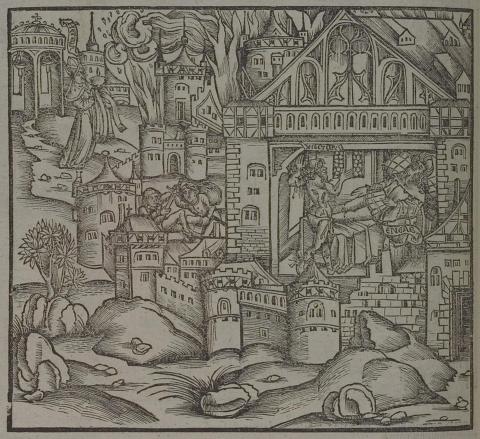
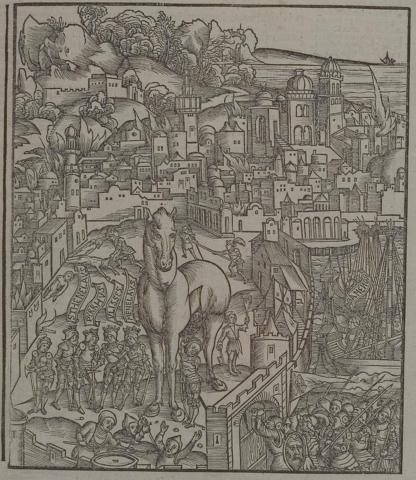
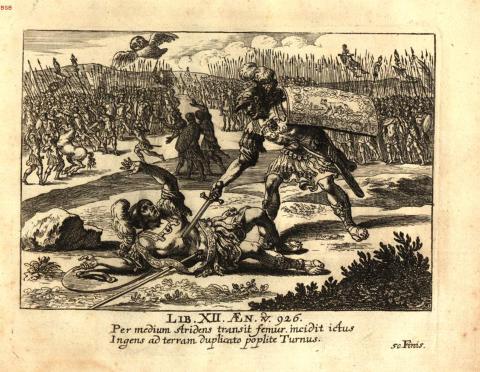
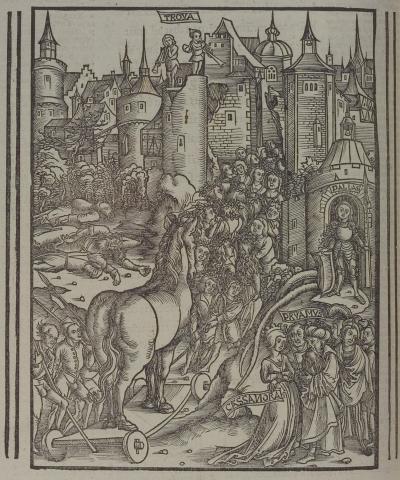
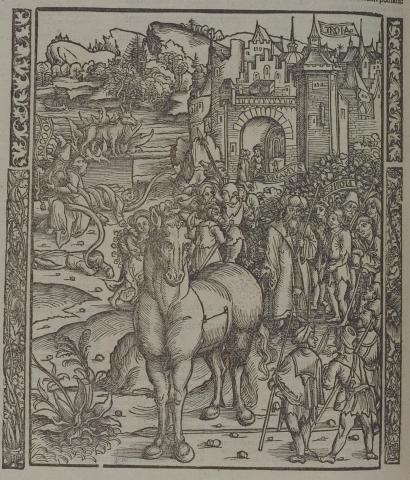
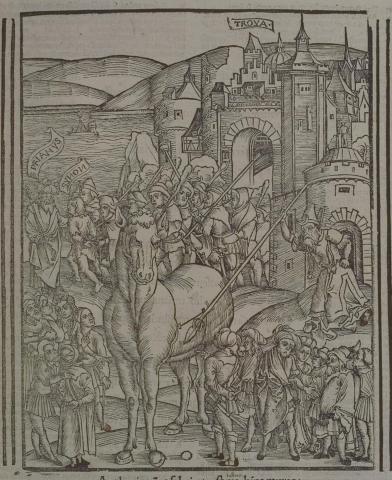
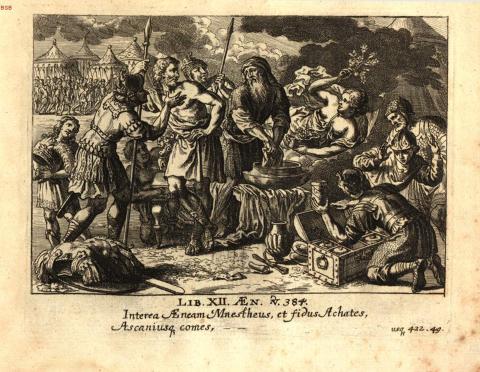
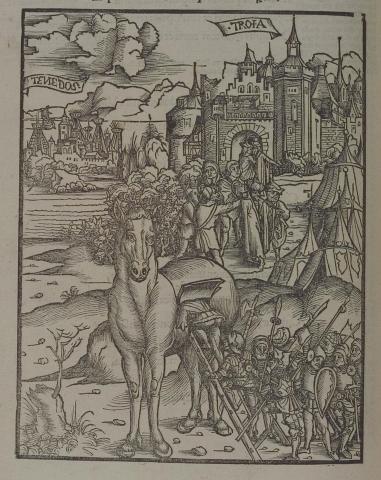
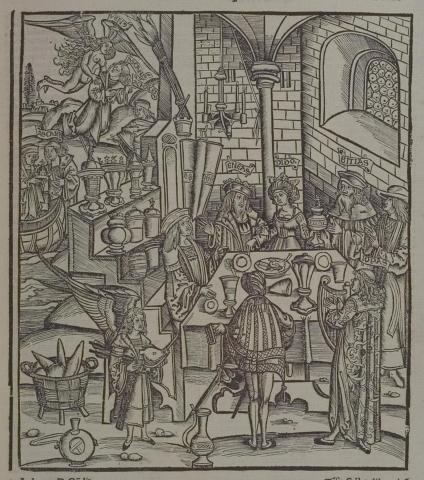
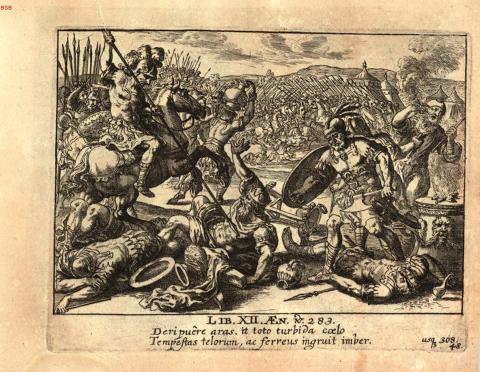
Sebastian Brant (1458–1521) was a humanist scholar of many competencies. Trained in classics and law at the University of Basel, Brant later lectured in jurisprudence there and practiced law in his native city of Strasbourg. While his satirical poem Das Narrenschiff won him considerable standing as a writer, his role in the transmission of Virgil to the Renaissance was at least as important. In 1502 he and Strasbourg printer Johannes Grüninger produced a major edition of Virgil’s works, along with Donatus’ Life and the commentaries of Servius, Landino, and Calderini, with more than two hundred woodcut illustrations. (Annabel Patterson)